Helpdesk and Service desk blog
Read all the latest posts as we blog our way through the latest in service management best practice, software, IT news and HelpMaster.
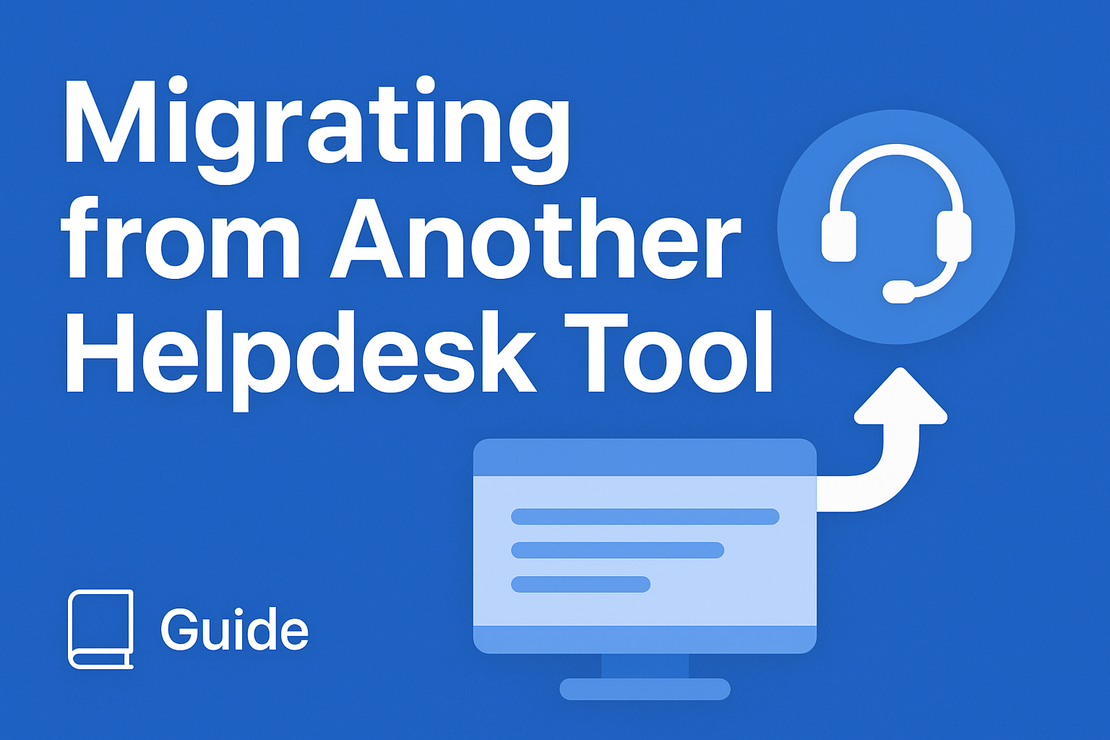
ITSM Tool migration guide
Switching to a new helpdesk system can feel like trying to replace the engine while the plane’s still flying. You’ve got live tickets to manage, customers to support, and data that can’t afford to go missing. How can you change tools, while at the same time providing the service and support that you’re currently doing….and how can you configure a new system while simultaneously maintaining the existing software!? No worries! We’ve made a guide that provides a clear, structured, and proven approach for migrating from any other helpdesk or ITSM platform — whether it’s a cloud system or an on-premise setup.
Read More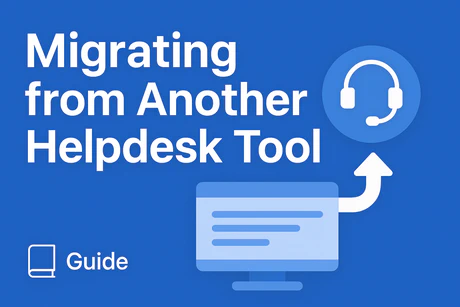
ITSM Tool migration guide
Switching to a new helpdesk system can feel like trying to replace the engine while the plane’s still flying. You’ve got live tickets to manage, customers to support, and data that can’t afford to go missing. How can you change tools, while at the same time providing the service and support that you’re currently doing….and how can you configure a new system while simultaneously maintaining the existing software!? No worries! We’ve made a guide that provides a clear, structured, and proven approach for migrating from any other helpdesk or ITSM platform — whether it’s a cloud system or an on-premise setup.
Read More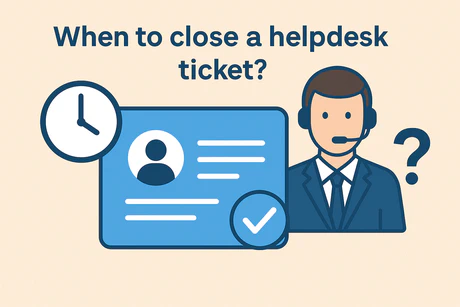
Resolve and close helpdesk tickets
All helpdesk/service desk tickets (incidents, problems, tasks) naturally progresses from an initial state, through to resolution and closure. Along the way, it is common that the ticket will be updated with multiple status changes. A common support helpdesk ticket lifecycle often has the following cylce: …with “In Progress” being an iterative loop between the end-user and the helpdesk agent. During the “In progress” phase, the interplay between the end-user/client and the helpdesk agent is akin to a “helpdesk tennis match”.
Read More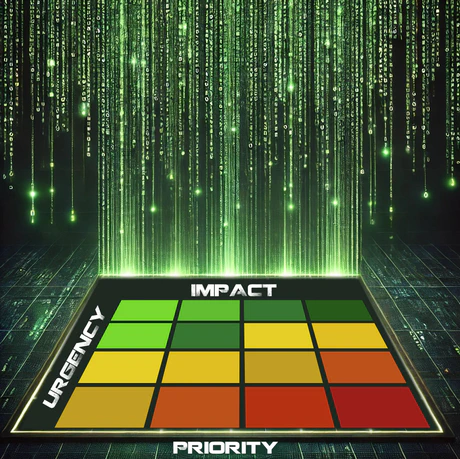
Impact / Urgency Priority Matrix
Enter the matrix! In the fast-paced world of IT Service Management (ITSM), not all issues are created equal — and they certainly shouldn’t be treated that way. That’s where the Impact/Urgency Matrix comes in. This essential tool helps IT teams quickly and consistently determine the priority of incidents, service requests, and problems, ensuring the right issues are addressed at the right time. By analyzing two core factors — impact (how many people or systems are affected) and urgency (how fast a resolution is needed) — the matrix provides a structured way to assign priority levels.
Read More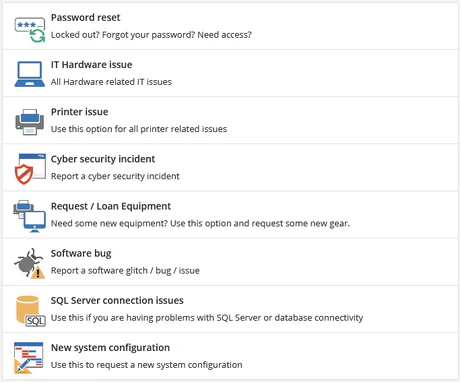
What is helpdesk software?
Helpdesk software is a broad term for business software that can add value and productivity to a number of key areas within the enterprise. When properly configured and utilised, helpdesk software has a positive influence on the end-user clients (employees, contacts etc) of an enterprise, the helpdesk staff, helpdesk management and the enterprise as a whole. The HelpMaster suite of helpdesk software from PRD Software has been specifically designed for the modern helpdesk environment.
Read More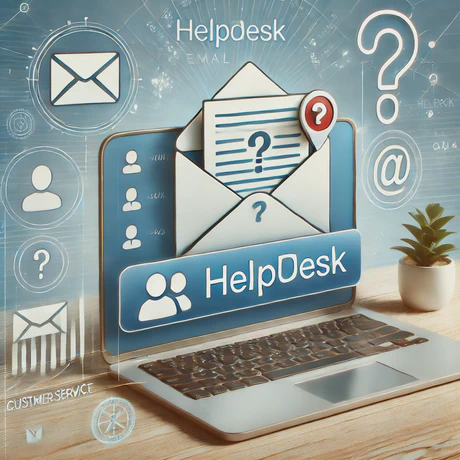
Helpdesk and service desk email templates
Email plays an important role at the service-desk, whether it be in-coming, out-going, or just internal communication with other members of your support team. Although other notification channels are available for service-oriented support, such as chat, web and a range of pop-up notifications alert mechanisms, email offers a rich medium for sharing content, attachments, and offers very good opportunities for automation. It’s not uncommon to see a lot of email being passed around at the helpdesk, with a lot of it generated from the service-desk tool being used.
Read More
ITIL + Service Management solution = ROI?
Recently PRD Software / HelpMaster were approached by a large government organization that are looking to replace their current service management software. At the helm of the product replacement team are seasoned ITIL practitioners and long-time helpdeskers who, in their words, are the “vanguard” of ITIL implementation. The software to be replaced is one of the leading, top-tier products on the market today. The reason for the replacement? Not because it lacked functionality, Not because it was clunky Not because it did a bad job at aligning with ITIL None of these things
Read More
A few good database administrators
CIO: “Did you order the schema change?” DBA: “You want answers?” CIO: “I think I’m entitled.” DBA: “You want answers!!?” CIO: “I want the truth!” DBA: “You can’t handle the truth!” DBA: “Chief, we live in a world that has databases. And those databases have to be administered by nerds using Powershell. Who’s gonna do it? You? Developers? I have a greater responsibility than you can possibly fathom. You weep for your application and you curse the DBA team.
Read More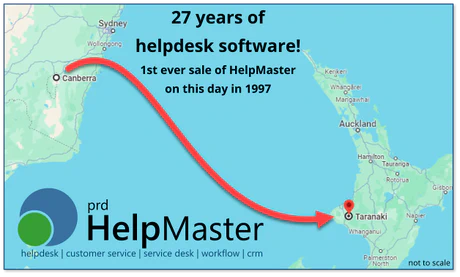
27 years of helpdesk software!
July 2nd, 1997 will always be a special day in the history of PRD Software. It’s the day the first ever sale of HelpMaster was made back in 1997 to an educational centre in Taranaki, New Zealand. Coincidentally, this was also the day we scrambled to create a helpfile, a product installer, license agreement, some basic documentation and organize international shipping and packaging. Nevertheless, we got it all done, and it was the start of wonderful journey of becoming a software vendor in the helpdesk and service-desk business.
Read More
Helpdesk roles and responsibilities
The service desk / helpdesk is a core part of any business that manages technology, services and solutions. The team at the service desk run a busy show to provide the support that consumers of those services require. Sometimes it’s technical support, sometimes it’s training, sometimes it’s management and strategic vision, sometimes it’s a bit of everything. In smaller operations, helpdesk staff are often a “one-stop-shop” for things IT related (cheers for these absolute heros!
Read More
ITIL Compliant service-desk software
Is there such a thing as an ITIL compliant service desk application…helpdesk software even? Nope. Back in the day, ITIL was referred to as a library (the “L”). You cannot be compliant to a library. These days, ITIL is a stand-alone name given to the framework of service-management related ideas and concepts. Either way, there is no compliance to it. ITIL describes a process, or a value chain only. It doesn’t tell you how you must implement it.
Read More